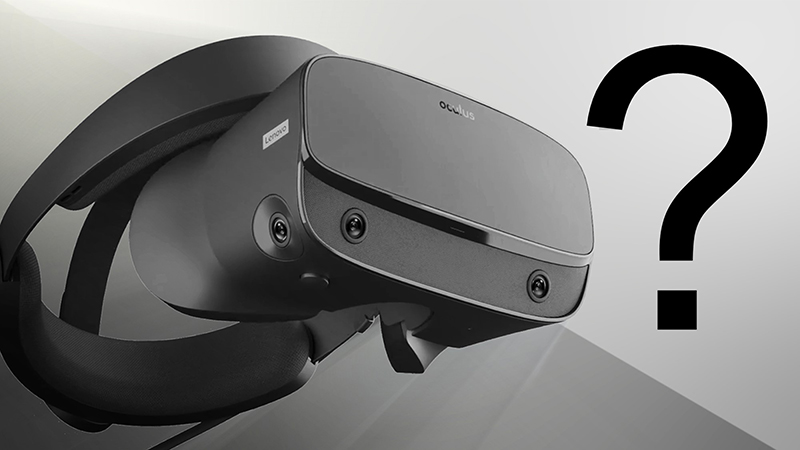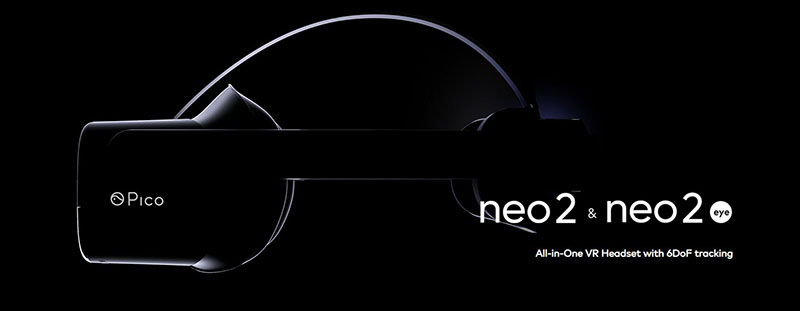Oculus Doesn’t Like You – Choosing the Right Headset for Deploying Enterprise Virtual Reality Training
There are many, many, many articles about how training in Virtual Reality results in higher engagement levels and better retention of knowledge amongst trainees than traditional teaching methods. The world does not need another one of those articles. Instead, we will be discussing the importance of choosing the right headset in order to ensure that your VR training platform can be deployed effectively and efficiently to a large audience. Because without intuitive, scalable deployment, all of the money you spent developing your curriculum will go to waste.
As the COO of a studio that develops VR-based training for our clients, it’s all about white-knuckles and stomach acid when you take your VR applications out of the office and on the road for a training launch. What worked back at the studio, might not necessarily work once you’re in front of your client, using the slow, plodding free Wi-Fi provided by a hotel or conference center. Now, imagine that stress and tension being compounded by the fact that you chose the wrong headset for the delivery of your VR content. The wrong selection could literally leave you unable to deliver the content you developed to your trainees. That’s a very expensive mistake.

Without a doubt, Oculus is the biggest name in the VR headset marketplace. After being acquired by Facebook, Oculus set about becoming the best-selling VR headset in the world and they are dominating their competition. This is all well and good if your VR goals are tethered solely to playing Beat Saber and whatever other game offering is currently available in the market. If you don’t take issue with having all of your personal data mined by the good people at Facebook, you can get an Oculus 2 for only $299 and start gaming your life away. But if you are looking at enterprise training, you need to stay far, far away from Oculus.
Why Oculus actively discourages and prohibits the use of its consumer VR headsets for enterprise applications is God’s own mystery. But it’s right there in their Terms of Use. If you use your Oculus for work, you void your warranty. Also, all consumer-based Oculus devices now require a pairing with a Facebook account in order to actually work. Needless to say, the IT departments of all the companies we work with are not exactly chomping at the bit to have Facebook monitoring their corporate activity and collecting their data and confidential intellectual property.
When we first embarked on delivering VR training content to our clients, we were able to use developer channels supplied by Oculus that allowed us to create our own deployment solutions. Why did we have to spend hundreds of thousands of dollars developing a deployment system that would allow our content to be viewed by our clients? Because Oculus wouldn’t allow any enterprise applications onto the Oculus Store. Accordingly, we effectively had to build our own store. However, every time Oculus made a firmware update or pushed through a new patch, our content delivery system would have to be appended and updated. Until that was done, the applications would crash or there would be bugs that needed to be fixed. Naturally, this was not thrilling to our clients who paid our company millions of dollars to develop their VR training libraries.
In early 2019, we attended a developer trade show in San Jose. There were rumors that the head of Oculus’ newly formed Enterprise Department might make an appearance. My goal was to talk to her about a win-win solution I had for solving the deployment dilemma. My idea was simple…our clients would rent space through a private channel on the Oculus Store that enterprise users could access with their own individualized PIN. Our clients would be able to easily deploy content and Oculus would sell a ton of additional units each year.
When the head of the Oculus Enterprise Department finally arrived, there was a palpable electricity in the room – like the Dali-Lama or a Kardashian had just shown up. She went quickly from booth-to-booth cursorily sampling the developer’s wares like a member of Saudi royalty hastening through the selections at the local bazaar. I shadowed her as best I could – confident in the belief that once my amazing new idea about renting space was explained – I would be quickly whisked away via limousine to Facebook headquarters. Over dinner at Protégé, Mark Zuckerberg himself would ask me, “So, Eric what’s this amazing new idea you have about renting space?”
When she did pause long enough to allow for a quick conversation, I hastily explained my slam dunk, win-win plan. She looked at me for all of three seconds and said, “Yeah, that’s not our business model.” She then said she had to run, but would drop back by our booth on her way out. She knew that wasn’t true, we knew that wasn’t true and – if a dog had been present on the floor that day – it would have known it wasn’t true.
But there was one thing she wasn’t lying about. Selling headsets is not the business model for Oculus. Oculus wants to sell content and Facebook wants your personal data. They will give you the headset for free if they have to. I’ll never truly understand why personal data is so valuable. I’ve had all my personal data for over 50 years and I’ve made exactly zero dollars from it. I suppose the value is in getting other people’s data.
At the time this article was written, Oculus (after many empty announcements and developmental delays) had finally launched its Oculus for Business headset. The main benefit of this unit – as opposed to its consumer counterpart that’s priced at 1/3rd the cost?
You don’t need a Facebook account in order to use it.
Literally, that’s the main enterprise benefit.
But even companies that pony up the high point-of-entry price (I forgot to mention that there is also a yearly subscription fee) should not feel safe from the data pirates over at Facebook. The Oculus for Business still requires that you set up an account through Workplace by Facebook. Workplace by Facebook claims it does not share data with Facebook. Whatsapp used to make the same claim, but it’s been recently discovered that they’ve been sharing data with Facebook for years. Any company with common sense should be able to easily see where all of this is headed. If you value your intellectual property and your company’s confidential data, stay away from Oculus.

Now that you know what headset not to buy, I do have a recommendation. We recently switched our primary VR client over to Pico. The Pico Neo 2 has a reasonable cost of entry (at the time of this writing it retailed at $599 per unit) and they have no restrictions on content loading and enterprise use. Downloading a VR application onto your Pico Neo 2 is as easy as downloading an app to your phone. Your content can be shared company-wide without worrying about changes to firmware or software that could affect or disrupt the performance of your VR applications. With the Pico Neo 2, I know longer have to load up on Xanax prior to attending a training launch. We know the equipment will work and work well. After five years in the VR enterprise development space, we finally have a partner that will work with us and not against us.
It should be noted that Pico is not the only game in town when it comes to enterprise VR headsets. HTC Vive and HP both make excellent headsets and are not out to mine your company’s data. Ultimately, the Pico Neo 2 was our choice, and it was a great choice.
After all, Oculus doesn’t like you….
